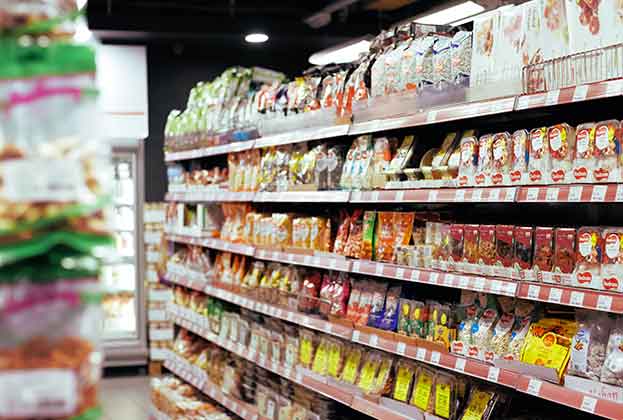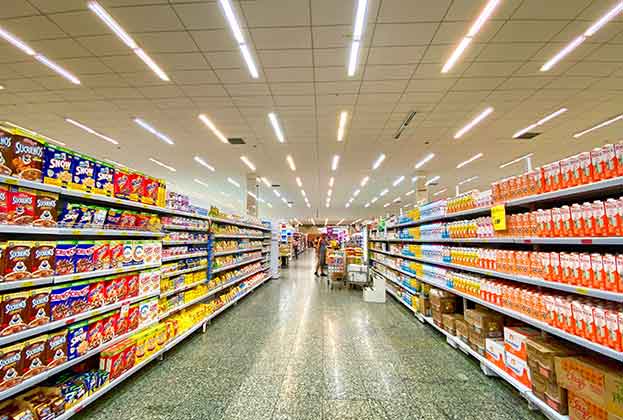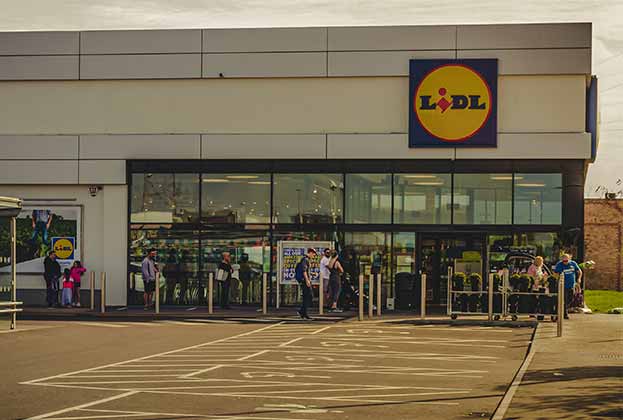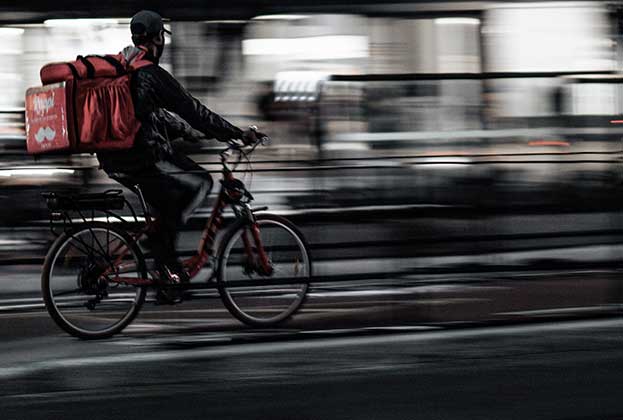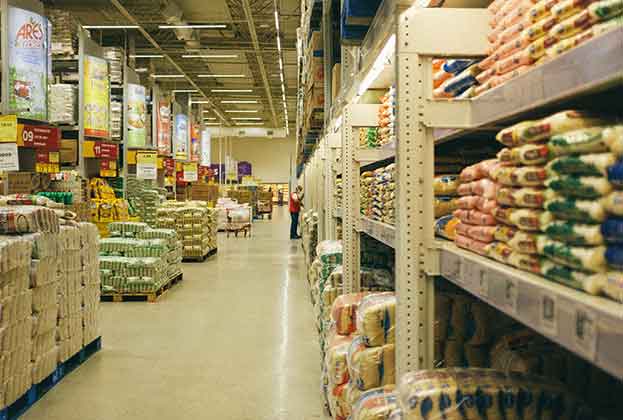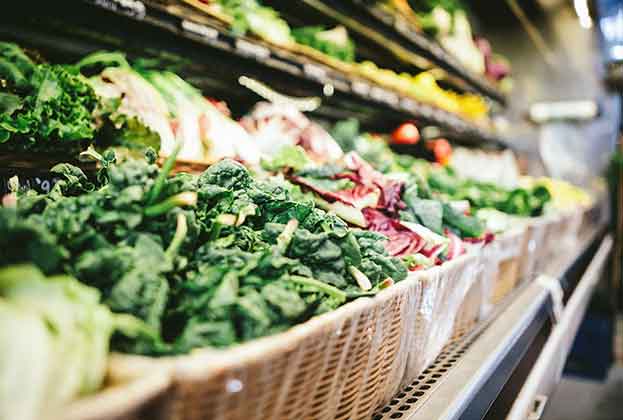Consumer confidence remains suppressed; however, the grocery sector shows strong resilience. The key question remains, how to predict consumer behaviour in the new normal
Grocery performance bucks wider consumer trends
Consumer confidence at its lowest point since the global financial crisis (GFC), but sentiment tentatively improves
Since Covid-19 took hold in March 2020, we have seen consumer confidence fall into negative territory across Europe, akin to levels last seen in 2012 during the GFC. In Q2 2020, at the onset of the pandemic, figures dropped by close to 1,000 basis points to -18.5%, from -8.6% we saw the previous quarter. This is the lowest it has fallen since Q4 2012, in the midst of the last global recession when consumer confidence stood at -21.73%.
The decline in confidence has, unsurprisingly, been matched by consumer sentiment with regard to the financial situation across each of the European nations. At the outset of the pandemic, sentiment fell by 8.6% from a positive outlook of 0.7% to a negative feeling at -7.8%. However, at the end of Q1 2021, consumer opinion on national finances has shown a marked improvement and currently stands at -2.9%. This suggests that consumers across Europe believe we are perhaps through the worst of the pain financially, in response to Covid-19, and that financial security should improve somewhat, albeit tentatively, as the difficulties associated with the pandemic continue to linger into this year.
Savings ratios rise, improving consumer perception of personal finances
In response to the trepidation toward national finances and the fall in consumer confidence brought about by Covid-19, it has been of no surprise that precautionary saving has also dramatically increased over the last 12 months. Average ‘Savings at present’ rose considerably from a position of 7.9% in Q1 2020 to a decade high of 23.8% by Q1 2021; the financial difficulties associated with the global recession clearly living long in the memory, resulting in consumers opting to err on the side of caution with regard to their personal finances.
One positive upshot of this behaviour, however, has been the consequential effect of the financial security of individual consumer household finances. It may seem counter-intuitive, but in the period where both consumer confidence and perception of national finances fell, the average statement on the financial situation of households continued to rise steadily, as it has been doing for the last few years.
Consumer perception was at 16.8% at the start of the pandemic and has risen to 19.5% by the beginning of the New Year. Although only a modest climb, the continued gradual upward trajectory suggests that with a dramatic increase in precautionary saving, brought about by long periods of national lockdown and a reduction in our daily expenditure, overall consumers believe their personal finances have somewhat improved, despite the financial difficulties in their wider economies and the subsequent retraction in the confidence of the consumer.
Unemployment expectations are high, but pent-up demand will drive consumer spending
We could, therefore, witness consumer spending behaviour swing in two directions this summer as the vaccination programme continues across Europe and lockdowns begin to ease. Low consumer confidence and job uncertainty are expected to uphold high personal saving ratios until well into 2021, fostering a much more cautious approach to spending for some.
We could see a portion of consumers opt to spend more enthusiastically, driven by the pent-up demand following the last 12 months of heightened savings
Eri Mitsostergiou, Director, European Research
The chart below highlights how average unemployment expectations rose exorbitantly in Q2 2020 as Covid-19 became globally apparent. The balance of public perception more than tripled from 16.2% at the beginning of the year to 57.8% by the beginning of March. Although this position has been steadily falling ever since, as European governments introduced their own measures of financial support for businesses and their working populations, it still remains high at 47.4% at the end of Q1 2021.
Conversely, that being said, we could see a portion of consumers opt to spend more enthusiastically, driven by the pent-up demand following the last 12 months of heightened savings, as we steadily relax lockdown and social distancing measures throughout Europe. As a result, GlobalData is anticipating European consumer spend on all retail goods to increase by 0.8% in 2021, compared to the year prior.
When it comes to consumer spending behaviour, we are, in reality, therefore much more likely to see a ‘normal distribution’ in statistical terms, rather than a full swing in either direction that favours either a position of caution or one of avidity. The majority of consumers will undoubtedly tighten their belts and restrict spending in some sectors, only to increase their expenditure in others, thus sitting somewhere between the two extremes of the consumer spending spectrum.
Retail sales – opposite fortunes for groceries and fashion
It is fair to say, however, we have indeed seen a significant polarisation in trading results by subsector over the previous 12 months. While spend across more pandemic-sensitive segments such as fashion, travel and eating out have been suppressed, it has fostered growth opportunities across other sectors, with grocery emerging as one of the biggest beneficiaries.
The chart below highlights a decline in total retail sales growth across Europe in 2020 as the impact of the pandemic took hold and consumer confidence began to fall. The average growth rate across all European area countries fell by more than half, from 3.9% in 2019 to only 1.7% in 2020. By comparison, clothing and footwear sales have been one of the worst affected subsectors, sales falling from a position of 2.8% growth in 2019 to an -18.7% decline in 2020.
Nevertheless, food and grocery sales have very evidently bucked that trend and posted the complete opposite change in fortune over the last 12 months; sales growth in the sector increased by four-fifths, from 4.2% in 2019 to 7.5% in 2020. This makes sense when you consider that foodstore operators are considered to be an essential retail operator and have been allowed to continue trade across Europe throughout the pandemic. Furthermore, with the hospitality industry closed for large periods and national lockdowns in place throughout the continent, consumers have been servicing nearly all their meals from home, with the exception of local takeaway services, which has meant supermarkets have been even more pivotal than they would ordinarily be in feeding the public during the last 12 months.
Analysing this trend on a country by country basis, all European nations saw an increase in food and grocery sales in 2020 from that seen the previous year, with the only exceptions being Bulgaria, Poland and Portugal. 18 of the 23 countries analysed saw sales growth in 2020 exceed the average across all of Europe for 2019. Those nations where food and grocery sales growth was most prominent in the last 12 months include Greece, Hungary, Norway, Romania, Russia, the Slovak Republic, Turkey and the UK, exceeding the 2020 European average in each case.
Sharp increase of online groceries sales
The exponential pattern of consumer spend growth for food and grocery has been even more considerable when we look at online sales in isolation. We inevitably saw a decline in total retail sales in 2020 as many physical stores were forced to shut for large periods.
However, online retail sales grew in contrast, as consumers were forced to make a number of purchases they would typically make in-store over the internet. Total online sales climbed from 16.2% growth in 2019 to 32.0% in 2020. Even online clothing and footwear sales grew despite a fall in sales in the market overall; those purchases that were made were largely done so online, and thus e-commerce fashion saw growth of 16.2% in 2019 rise to 25.6% in 2020 across Europe as a whole.
Grocery, however, once again saw the most positive uptick in performance. The online growth rate went from 19.5% in 2019 to nearly three times greater at 56.1% in 2020, highlighting a huge increase in the number of consumers across Europe ordering their groceries via the internet during the pandemic.
All European countries saw an improvement in their online food and grocery penetration rates in 2020, with all except Bulgaria posting an above-average rate of growth compared to the average for Europe the previous year. The Netherlands, Norway, Sweden, Turkey and the UK all saw particularly marked growth, exceeding the average for Europe in 2020 also, with Germany and Spain two other notable economies coming very close to it (see chart, below).
In the UK, the ability to rapidly increase online food and grocery sales in this way was possible due to the mature and extensive geographical coverage of the country’s key foodstore operators, each with a pre-existing online purchase and a delivery offer in place. However, even in less mature markets where food retailers had less developed online networks, they invested rapidly in upgrading their online ordering and delivery service in order to keep up with demand. Moreover, evolving consumer needs and habits have underpinned the expansion of new concepts, such as Q-commerce and the growth of pure players (see 'Pure players and new concepts').
Will the new consumer habits stick?
Despite the dramatic growth of sales and online trading, foodstore profitability remains restricted by low margins and rising logistics and staffing costs. Operators are looking for ways to reduce costs through automation, delivery outsourcing and last-mile delivery optimisation (see section 'Mini-logistics hubs'). Additionally, it is still uncertain to what extent new consumer behaviours will become the norm post-pandemic. When the economy reopens it is likely that grocery retailers will start losing market share of food and drink spending to cafes, bars and restaurants, putting further pressure on their profit line.
According to a recent (McKinsey/ EuroCommerce – March 2021) survey, the net intention of consumers is to continue spending more money on groceries post-pandemic than they did pre-pandemic. Besides, as the number of new online buyers will continue to rise, so will the online retail sales and the online grocery sales accordingly. Forrester predicts that the share of online buyers (as % of total population) will rise from 67% in 2020 to 75% in 2025. With regards to Food & Beverage online share specifically, Forrester forecasts a rise from 5.3% in 2020 to 12.6% in 2025.
Read the articles within Spotlight: European Food and Groceries Sector below.
.jpg)

